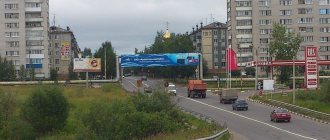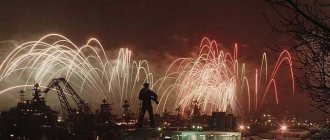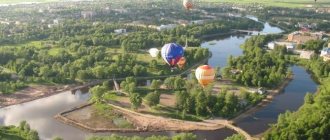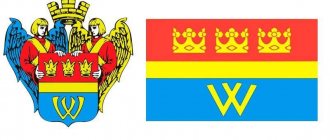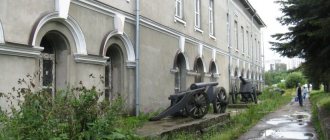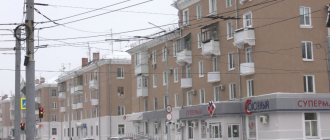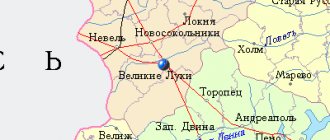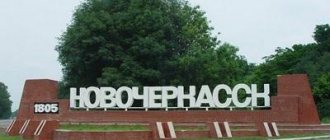Pskov is a Russian city located in the north-west of the country. It is the center of the region, district and district of the same name. It has a multi-ethnic population. Pskov is also one of the oldest settlements not only in the region of the same name, but also in the Russian Federation. Mentions of it can even be found in the Laurentian Chronicle, dating back to 903.
General information and population
Pskov is the largest city in the region in terms of population. Its population is about 208 thousand people. The city is divided into 14 microdistricts. Of course, at first glance, this is not such a large population; Pskov is not Moscow. However, until the 18th century it was one of the largest cities. After the founding of St. Petersburg, its importance decreased. Today it is a tourist center and an important transport hub.
Train Station
The Pskov-Passenger railway station is a junction station of the St. Petersburg-Vitebsk branch of the Oktyabrskaya Railway, which is located at 274 km of the St. Petersburg-Warsaw Railway. The type of railway station is passenger. The station is located at st. Vokzalnaya, 23. Opening hours: every day from 7:30 to 22:00.
The railway station receives and dispatches long-distance trains to the following directions: Moscow, St. Petersburg, Murmansk, Petrozavodsk. Suburban train services are also provided.
Historical information
The official founding date of the city is 903. However, it is known that settlements in this territory arose long before this. In the 10th-11th centuries. Krivichi made up the main population. Pskov was not founded by them. Excavations have shown that people lived in this area 2000 years ago. By the end of the first millennium, the first Slavic settlements appeared here. The exact age of the city still remains unknown. For almost 200 years, from 1348 to 1510, it was the capital of an independent republic, which later joined the Principality of Moscow. Until the 18th century, the population of Pskov was one of the largest not only in Russia, but also in Europe. During this period the city was an important trading center. The fortress around it consisted of five rings, which contributed to the city's fame as a defensive outpost. Throughout history, Pskov was conquered only once, not counting periods of occupation during both world wars.
After Peter founded St. Petersburg and gave it the status of capital, the expansion of the empire to the west, the importance of the city decreased significantly. Although it remains the largest city in its area. The population of Pskov as of 2016 is 208.145 thousand people. However, the city no longer has its former glory. Today it is only one of many transport and tourist centers in Russia.
Cost of living: prices for housing and communal services, food and housing
There are few skyscrapers in Pskov, multi-storey buildings are being built all the time, but city residents increasingly prefer to buy apartments in cottages and condominiums.
Pskov is located on the Velikaya River at its confluence with the Pskovaya River
Prices for renting and purchasing housing in 2022
- Rent a 1-room apartment in a residential neighborhood without utilities – 7 thousand rubles/month.
- Rent of a 1-room apartment in a prestigious area – from 10 thousand rubles/month.
- Rent of a 1-room apartment in the center – 11.8 thousand rubles/month.
- Rent of a 1-room apartment outside the center - 8.2 thousand rubles / month.
- 3-room in the center - 25.1 thousand rubles / month.
- 3-room apartment behind the center - 15 thousand rubles.
- Purchase of a 1-room apartment – from 1.2 million to 1.5 million rubles.
- “Odnushka” on the secondary housing market – from 800 thousand to 1.1 million rubles.
- Studio in a new building – from 900 thousand rubles.
- 2-room apartment – 2.1 million rubles.
- 3-room – 3.1 million rubles.
- 4-room – almost 4.8 million rubles.
On average, 1 m2 in the center of Pskov costs 35.3 thousand rubles, outside the central part the cost drops to 31 thousand rubles.
Many people who are planning to move to Pskov for permanent residence are interested in the question of utility prices. The size of the tariffs depends on many factors, among which an important role is played by the floor and total area of the apartment.
On average, Pskov residents pay 5.4 thousand rubles per month for utilities. for an apartment with an area of no more than 85 m2. Electricity, heating/cooling, trash removal, and water are included in the price.
More information about housing and communal services tariffs can be found on the Information website on housing and communal services of the city of Pskov.
Grocery prices in supermarkets in 2022
In supermarkets in Pskov, food prices are lower than in the capital region or neighboring cities.
Basic products can be purchased in online stores at the following prices:
- water 0.33 l – 36.8 r;
- 1 liter of milk – 49.1 rub;
- white bread – 31.57 rubles;
- white rice – 37.42 rubles;
- 12 pieces of eggs - 48.5 rubles;
- cheese – 201 RUR/1kg;
- chicken breast – 223 RUR/1 kg;
- 1 kg of beef – 447 rubles;
- apples – 80 rub./1 kg;
- 1 kg of tomatoes – 159 rubles;
- 1 kg of potatoes – 12.86 rubles;
- 1 kg of onion – 30.4 rubles;
- pack of cigarettes – 120 rub.
Watch the video: prices in the Svetofor store in 2022 in Pskov.
Public transport and taxis in Pskov: travel prices in 2022
It is hardly worth moving without studying the specifics of transport, schools, hospitals, shops or kindergartens in Pskov.
There is a well-developed network of taxi fleets, where prices are quite affordable. A separate type of transport is minibuses, which allow you to quickly get to the desired direction.
You can get to other cities of the Russian Federation, including Moscow or St. Petersburg, by trains, planes or buses.
There are also many motorists with their own cars, but this does not cause traffic jams. The track is in different conditions. Outside the city, it is high time to change the asphalt, but in the central part and other areas the road surface is regularly updated.
Everything is fine with public transport in the city. Only buses run; there are practically no complaints from citizens that they do not run according to schedule.
Traveling by transport is also cheaper compared to other localities in the country.
- The cost of a ticket for one trip on local transport is 23-27 rubles (depending on the number of trips - the more, the cheaper), a monthly pass will save a significant part of the budget.
- A transport card for 100 trips costs 1,100 rubles.
- A one-way taxi ride will cost from 100 rubles.
Ancient settlements
It is believed that the first people began to live in the territory of the current Pskov region 10-12 thousand ago. This became possible after the glacier retreated. However, at that time it was still very cold here, and most of the territory was covered by tundra. The climate became warmer about six thousand years ago. Therefore, more people began to live in this territory. In the south-eastern part of the Pskov region, pile settlements were discovered, the age of which is about 5-6 thousand years. At that time, people were mainly engaged in hunting waterfowl, fishing and collecting water chestnuts. About 3-4 thousand years ago, the territory of what is now the Pskov region became even warmer, which led to a further increase in population density. Gradually, all the undeveloped lands of the region were settled.
Pre-Slavic period
About 6 thousand years ago, tribes of the Finno-Ugric group came from the Urals to the territory of the Pskov region. The peoples related to them are modern Estonians. Chud and Vod also lived here. In this territory there were villages of Baltic tribes, which are related to the Slavs in language. In the 6th century, the Krivichi came to the region. They are the direct ancestors of the modern population. It was the Krivichi who became the first Slavic tribe in the territory of the present Pskov region.
Parks and walking areas of Pskov
A special atmosphere of the city is given not only by its monuments and historical buildings, but also by natural attractions.
Embankments
It is one of the best places to enjoy nature, appreciate the inaccessibility of Pskov and feel the spirit of the times. After all, it was from here that Rurik left for Kyiv, Princess Olga and many other famous historical figures walked here.
Currently, the Velikaya and Pskova embankments are landscaped walking areas with wide sidewalks and benches. And next to all these “blessings of modernity” rise the medieval walls of Crome and its towers
Mirozh Arboretum
The first plantings in the arboretum near the walls of the Mirozhsky Monastery were made in 1966. On the territory of the arboretum you can find false sycamore maple (white maple or sycamore), characteristic of Central Europe and South-West Asia - the only tree of this species in Pskov. Here you can also admire silver poplars and white willows.
The Duck Pond is considered one of the most beautiful places in the park. Here you can not only feed the many waterfowl that live in the pond, but also enjoy a light and music show. For the latter, with the onset of the warm season, a floating dynamic light fountain in the shape of a lily is installed here.
Where is it: st. Yubileinaya, 1a.
Park Kuopio
Founded in the river valley 30 years ago. Architects from the city of Kuopio, which is a sister city of Pskov, took part in the design and arrangement of the park. It was in honor of this city that the park got its name, while townspeople often call it simply Finnish.
Walking through the park, you can see the Gremyachaya Tower, the Church of Cosmas and Damian, the Peter's Bastion from the Northern War and the ruins of the Kukka water mill.
Where is it: st. Gremyachaya, 8.
Park of Culture and Leisure named after A. S. Pushkin
This park is located on the site where the protective bastions of the city stood several centuries ago. On the territory of the park there is a Summer Garden, a Botanical Garden, and a Children's Town (children's park). In the park you can relax in the shade of spreading trees, go on rides and simply take a break from the hustle and bustle.
One of the most popular and favorite attractions of the park is the Ferris Wheel, from the top of which you can look at the amazing panorama of Pskov.
Where is it: Oktyabrsky Ave., 34.
In dynamics
The population of the city of Pskov at the beginning of the 18th century was about nine thousand. By the middle of the century it had already exceeded 10,000 people. At the beginning of the 19th century, more than 30 thousand lived in the city, and in 1917 - already 60,000. During the years of occupation, the population of Pskov decreased by half. In 1920, only 29 thousand people lived in the city. However, before World War II, the 60,000 mark was again reached. In the 1960s, 100 thousand people already lived in the city. At the time of the collapse of the USSR - almost 210,000. Over the next 10 years, the city's population decreased slightly. In 2001, the city had a population of 200 thousand. Then, over the next two years, the city's population grew by 2,000 people. However, during the period from 2004 to 2009 it decreased to 193 thousand. Since 2012, the Pskov region has recorded positive population growth. In 2015, 207.5 thousand people lived here. Most of the population is urban. The number of village residents is declining more and more every year. This is not a feature of the Pskov region, but is typical for all regions of the Russian Federation.
PSKOV
PSKOV, city in Russia, adm. center of the Pskov region Us. 206.7 thousand people (2014). Located on the river. Velikaya, at the confluence of the river. Pskov. Junction of railways and roads. Intl. airport.
Panorama of the central part of the city. Photo by A. I. Nagaev
One of the oldest Russian cities. By 2014, St. 12 hectares of cultural layer (thickness from 0.5 to 8 m, about 300 thousand individual finds). The oldest finds on the territory of Petrograd (2nd millennium BC) belong to corded ceramics of a cultural and historical community. The settlement on the Pskov settlement (a cape at the confluence of the Velikaya and Pskova rivers) belongs to the Asva-type monuments (territory of Estonia; mid-3rd quarter of the 1st millennium BC). In the 1st half. 1st millennium AD e. there was a Baltic-Finnish village here.
Arose on part of the Pskov settlement in the 3rd quarter. 1st millennium BC e. the settlement of long culture mounds became the basis for the formation of Petrograd itself; to the 8th–9th centuries. include an earthen rampart along the crest of which ran a palisade, log houses with a recessed center. partly and a stove-heater, above-ground buildings (4×5 – 6×7 m) with adobe floors and hearths. Crafts were developed (iron making, jewelry, bone carving, etc.). In the end 9 – beginning 10th centuries a settlement began to form. Under 903, P. is first mentioned in The Tale of Bygone Years in the story about the marriage of Prince. Igor on the book. Olga. At 10 – start. 11th centuries the city developed along the coastal terraces of rivers (up to 12 hectares in area), skirting on both sides the hills in the interfluve, on which the mountains were located. a necropolis (79 burials were studied) and a round platform surrounded by a moat with a pillar pit in the middle (interpreted as a sanctuary). The presence of Slavic, Baltic-Finnish, Baltic, Scandinavian can be traced. components of culture. 1 km from the settlement there was a scand. necropolis (9 burial chambers with rich grave goods from the 10th century were studied).
Panorama of Krom (with the Trinity Cathedral and bell tower of the late 17th – early 18th centuries) and Dovmontov town (with the foundations of churches and civil buildings of the 13th–16th centuries). Photo by A. I. Nagaev
No later than 1st half. 11th century P. spread to Zavelichye (the left bank of the Velikaya River; area by the 13th century - 22 hectares) and Zapskovye (right bank of the Pskova River; area by the 13th century - 19 hectares), first mentioned in 1323. Center. part and Zapskovye were connected by a stationary bridge (according to later news, it was renewed once every 20 years); A floating bridge led to Zavelichye, from which Izborskaya Street began. (paved in 1418). From ser. 11th century The settlement between the Velikaya and Pskov rivers occupied part of the center. necropolis; new burial grounds appeared outside the suburbs. At the turn of the 11th–12th centuries. The first stone fortress wall was erected at the Pskov settlement (dry-built from limestone).
In the 2nd third 12 - 1st half. 14th centuries P. was part of the Novgorod Republic. In the 1st half. 12th century the churches of St. Dmitry of Thessalonica, the Transfiguration of the Savior (no later than 1153) in the Mirozhsky Monastery, the Nativity of John the Baptist in the Ivanovo Monastery are being built. (in the 14th–15th centuries, the resting place of the Pskov princesses). In the 1190s. The stone Cathedral of the Holy Trinity was built. 16.9.1240 the city was captured by the troops of the Teutonic Order. In 1242 he was released by the Prince of Novgorod. Alexander Yaroslavich Nevsky. On the board of Prince Dovmont (1266–70, 1271–99) part of P. (area 4.5 hectares; later called Dovmont’s city) was fortified with a stone wall; stone churches of St. Timothy of Gaza (1267), St. George the Victorious (1269), St. Theodore Stratelates (1270–72), the Resurrection of Christ and 2 stone cities were built. buildings (prince's chambers and, probably, the gridnice). In 1269, 1299, 1323, 1348, 1367, 1370, 1480 and 1503 P. withstood sieges by the troops of the Livonian Order.
The territory inhabited between the Velikaya and Pskov rivers in the 13th century was at least 55 hectares; the buildings were manor houses, some streets were up to 5 m wide, ditches, paved with wood, sometimes with fine limestone; single houses were sq. up to 70 m2. Among the finds is St. 600 hanging lead seals, 9 birch bark letters (12th–16th centuries), Arabic, European. and Russian coins. From the 13th century The Pskov school of icon painting began to take shape.
In 1309, on the settlement from Velikaya to Pskova, a stone fortress wall with 2 gate towers (bonfires) was built, surrounding the square. 20 hectares. Outside it was located Polonishte (first mentioned in 1323). In the 1st half. 14th century – 1510 P. – capital of the Pskov Republic. In the 14th century The Pskov settlement (later known as Krom) ceased to be a residential area and was built up with warehouse buildings (“Krom cages”). In 1337 the south was rebuilt in stone (renewed in 1392/93). the wall of Krom, separating it from the city of Dovmont, where the bell tower of the Holy Trinity with the veche bell was located. A c. was erected in Krom. Annunciation (no later than 1343), in 1365–67 the Trinity Cathedral was rebuilt “on the old basis”, in front of which there was a “buevishte” - a gathering place for the veche. The approaches to Krom were protected by “Greblya” (a ditch with 2 bridges). From the 2nd half. 14th century Dovmontov city became the church center of P. Towers were built in 1376/77 on the flank walls of the Middle city, next to the wall of Dovmontov city, in 1399/1400 - in Krom.
In the 1360s. “around the entire settlement” trees were built. fortifications, in 1374–1375 they were replaced by a stone wall with 9 towers (surrounded by an area of 40 hectares). From 13/14 centuries on the outskirts and in the immediate vicinity of Pskov, monasteries arose and were actively rebuilt: the Snetogorsky monastery for men (from the 1st quarter of the 15th century - the place of tonsure and burial of the Pskov princes); male Panteleimonov distant mon., male Panteleimonov mon. on the Red Court, the Old Ascension convent (from the 2nd half of the 15th century - a meeting place for rulers and princes upon their entry into Poland), etc. In the 2nd half. 14 – 1st floor. 15th centuries The Pskov architecture took shape. school. In 1394 Pskov withstood the siege of the Novgorod army. From the 14th century the division of the Middle Town into 4 ends can be traced (Opotsky, Gorodetsky, Ostrolavitsky and Bolovinsky).
In the 15th century construction was resumed on all sites developed in the 11th–13th centuries. In Krom, another tower was erected in 1416–19, and a wall between the Great and Small Gates was erected in 1451–52 (the interior of the wall served as a prison). In 1465, the settlement in the interfluve and in Zapskovye was surrounded by trees. a fortress wall (in the late 15th - mid-16th centuries it was replaced by a stone one), the territory inside it was called. Okolny town (divided into ends - Polonissky - in Polonische, Petrovsky - the Novy Torg district, Bogoyavlensky and Kozmodemyansky - in Zapskovye). P.'s fortifications reached their maximum and covered 215 hectares; the walls (including internal ones) had a length of more than 9 km and up to 20 towers. The formation of the street network was completed; quite large spaces remained on the outskirts, used for vegetable gardens (preserved in the 16th–17th centuries). Basic streets that turned into roads outside the city: Velikaya (to the south), Petrovskaya and Trupekhovskaya (to the east), Zvanitsa (to Zapskovye and further to the north), Izborskaya (to Zavelichye and further to the west). Torg was located in front of the wall of the Dovmont city (first mentioned in 1307/08); nearby is the prince's court (first mentioned in 1383/84). In 1425 the Pskov Mint began to operate (see article Mint). On the right bank of the Pskov River, opposite the Krom (“German bank”), there were courts of foreign merchants (in the mid-16th century they were moved to Zavelichye).
Since 1510, part of the Russian Federation. state In the 16th–17th centuries. The city continued to develop steadily, the density of buildings within the walls of the Okolny City increased, and all areas suitable for living were developed. Outside the city walls, a settlement developed. Together with the settlement, the territory of P. in the 16th–17th centuries. was approx. 428 hectares; in the city and in the suburb there were approx. 40 parish churches and 46 monasteries. Population of Pskov by mid. 16th century amounted to approx. 30 thousand people The German (German-Swedish) (1520s-60s, 1580s - 2nd half of the 17th century) and Lübeck (Hanseatic) (1588 - early 17th century, 1636) operated in Poland. 37 – mid 17th century) guest courtyards. P. is one of the Russian bases. troops during the Livonian War 1558–83, at the end. 1550s - early 1560s By order of Tsar Ivan IV Vasilyevich the Terrible, the fortress walls of the Okolny town were strengthened: with the help of trees. extensions expanded the old towers, with internal. On the sides of the stone wall, a wooden one was erected from trees clogged with earth. log cabins (Tarasov). The Pskov defense of 1581–82 became a bright page in the history of Pskov. During the Time of Troubles, P. until Sept. 1608 remained faithful to Moscow. government, in the fall and winter of 1607, 400 participants in the Bolotnikov uprising of 1606–07 were sent to Pskov prisons. From Sep. 1608 BC In 1610, the governors of Petrograd were proteges of False Dmitry II; at this time, social conflicts periodically flared up in the city; in May 1609, the city suffered from a severe fire. On Dec. 1611 – May 1612 False Dmitry III was in Petrograd. In 1613 Swedes attacked Petrograd and its environs. troops and detachments of A. I. Lisovsky. In 1615 P. withstood the siege of the Swedes. troops under command. King Gustav II Adolf. In the 17th century P. occupied an important place in Russian foreign trade. state There were well-known merchants in the city. surnames (Karamyshevs, Menshikovs, Pogankins, Podznoevs, Postnikovs, Rusinovs). All R. 17th century one of the largest mountains occurred. uprisings in Russia state - Pskov uprising of 1650. One of the important centers for collecting Russians. troops during the Russian-Swedish the wars of 1656–58 and the Northern War of 1700–21. In 1701–05, under the personal control of Tsar Peter I, the defense fortified. a belt of bastions, semi-bastions and other structures, which included fortifications from the 16th–17th centuries. and church buildings adjacent to the fortress walls. After the end of the Northern War and the transfer of state. border to the west, P. lost its former military. meaning. Center of Pskovsky district and Pskov Prov. (1719–76) St. Petersburg. (before 1710 Ingria) province. (1708–27), Novgorod province. (1727–72), Pskov province (1772–76). Center of Pskov province. (1776–1927; in 1777–96 Pskov governorship). In the 2nd half. 19 – beginning 20th centuries railway traffic is open lines: Luga - Pskov (1859), Pskov - Ostrov (1860), Riga - Valk - Pskov (1889), Bologoe - Pskov (1897), Narva - Pskov - Polotsk (1916; destroyed in 1941–44). Since 1915, during World War I, the headquarters of the Northern Army was located in Petrograd. front.
Sov. power was established on October 26 (November 8). 1917. 24–28.2.1918 the city was occupied by the Germans. troops who were in it until November. 1918. 11/25/1918 occupied by units of the Red Army. 24–26.5.1919 occupied by units of white troops (including detachments under the command of S.N. Bulak-Balakhovich) and military. formations Est. republics. On August 26, 1919, after a fierce battle, it was again occupied by units of the Red Army. District (since 1927) and district (1927–30, 1935–40) center of Leningrad. region (1927–44). In Vel. Otech. Germany was occupied during the war. by troops 8–9.7.1941, heavily destroyed. Liberated on July 23, 1944 by troops of the 3rd Baltic Front during the Pskov-Ostrov offensive. operations. Since 1944 the center of the Pskov region. By decree of the Council of People's Commissars of the USSR dated November 1, 1945, it was included in the list of 15 ancient cities subject to priority restoration.
P. differs and excludes. preservation of the architecture monuments of the 12th–17th centuries. (among them are about 40 churches, over 30 stone chambers from the 17th century). The city center is located within the fortifications of the 15th–16th centuries. on the right bank of the Velikaya. On the cape, at the confluence of the Velikaya and Pskov rivers, the oldest part of the city has been preserved - Krom with stone walls, a zahab (1452) and towers [Troitskaya (1399–1400, the top was restored in 1988), Kutekroma (1399–1400, the top was restored in 1960– 61), Middle (1416–19), Flat at the Lower Lattices (1500)]. On its territory are the Powder Cellars (17th century), the 5-domed, 6-pillar Trinity Cathedral (1682–99; 7-tier iconostasis; the so-called Holguin Cross, 1623), the bell tower (between 1699 and 1706, top approx. 1803–06), clergy house (1843). In 2002, a cross was erected on the site of the Annunciation Cathedral destroyed in 1933 (1835–36, architect A.I. Melnikov). High south wall (Persian; 13th–15th centuries) Krom is separated from the Dovmont city, on the territory of which the foundations and parts of the walls of chambers and numerous buildings have been preserved. churches 13–16 centuries (including the Nativity of Christ, 1388; Intercession, 1398; St. Nicholas of Grebli, ca. 1417, all closed in the 18th century). In his south parts - 2-story Order Chambers (1692–95; now a museum) and the building of the Spiritual Consistory (1850–53).
On the territory of the Middle City (preserved fragments of walls and the Mstislav Tower near the Velikaya River, 1374–75; bastions of the early 18th century) in the 14th–16th centuries. small parish churches, characteristic of the Pskov school, were built from limestone, single-domed, with 3 apses, low extensions, with decorative belts in the upper parts of the walls, apses and drums - the Archangels Michael and Gabriel from Gorodets (founded in 1339, the top was rebuilt in 1694–95; hipped bell tower of the 2nd half of the 17th century), Peter and Paul from Buya with a 16-pitched roof (1373, rebuilt in 1540), St. Basil the Great on Gorka (1413; rebuilt in the 16th century; northern chapel of Apostle John the Theologian – 1585–87; in 2009–10 the mosquito roof was recreated), St. Nicholas of Usokha with a 2-bay belfry (1535–1536). In 1685, in the spirit of Moscow. architecture erected c. Hodegetria ex. courtyard of the Pskov-Pechersk monastery. with an 8-sided bell tower decorated with tiles.
Church of the Epiphany from Zapskovye. 1495–96. Chapels and belfry of the 16th century. Photo by D. V. Solovyov
In the 15th–16th centuries. The Okolny town, bounded by walls with towers, actively developed (Pokrovskaya, late 15th – early 16th centuries; Mikhailovskaya, early 16th century; Petrovskaya, mid-16th century). Prem. in the Polonissky end churches of this time have been preserved: New Ascension (1373–75, rebuilt in the late 17th century), St. Anastasia the Roman (1539, bell tower - 1827), Joachim and Anna on Polonishte (16th century), Sergius from Zaluzhye (1581–93); also ensemble former Starovoznesensky Monastery (founded in the 14th century, abolished in 1764) with the churches of the Old Ascension (1467) and the Nativity of the Virgin Mary (1833; the lower tier of the bell tower is the mid-19th century; since 1974 a planetarium) and the house of the abbess (1847). Near the river Great - the churches of St. George from Vzvoz (1494; porch with belfry, 1831), Mid-Pentecost (presumably 1494; bell tower - 1867) and the single-domed pillarless churches of the Intercession and the Nativity of the Virgin from Prolom (1582), united by a common wall. At the Petrovsky end, at New Torg, in the 17th century. the pillarless churches of the Intercession of the Virgin Mary (after 1590) and the 5-domed Church of St. Nicholas Appearing from Torg (1676, architect I.V. Buturlin) were built.
Church of the Intercession and Nativity of the Virgin from Prolom. 1582. Photo by P. S. Pavlinov
Zapskovye was fortified with cylindrical walls. towers (Varlaamovskaya naugolnaya, late 15th – early 16th centuries; High at the Lower Grids, 1500; Gremyachaya at the Upper Grids, 1525). In the 15th–17th centuries. in Zapskovye the churches of Cosmas and Damian from Primostye with an 8-slope roof (1462–63), Varlaam Khutynsky on Zvanitsa (1495; top of the drum with glazed tiles of the late 17th century; iconostasis of the 18th century), Epiphany from Zapskovye (1495– 96; chapels and 4-bay belfry of the 16th century), Cosmas and Damian from Gremyachaya Mountain (1540) ex. Kozmodemyansky Monastery (14th century, abolished in 1764), Resurrection of Christ from the Stadium (16th century; vestibule and 3-bay belfry 17th century; Vvedensky chapel, early 18th century) former. Voskresensky Mon. (15th century, abolished in 1764), the Image of the Savior Not Made by Hands from Zhabya Lavitsa (16th–17th centuries, restored in 1857), Elijah the Prophet from Meadow (1677; bell tower 19th century) formerly. Ilyinsky mon. (abolished in 1764).
Chambers of the Podznoevs. 17th century Photo by P. S. Pavlinov
In the 17th century in different parts of the city, stone vaulted chambers were built, strict in appearance, but often with monumental porches: 2-story residential buildings by I. I. Lapin, V. A. Pechenko (2nd half of the 17th century), Ya. P. Rokotov (1670–80s). Courtyards with 1–3-story Pogankin chambers, chambers of the Rusinovs (3 houses, 1630–1680s), Menshikovs (the so-called Yakovlev house, late 17th century), and Podznoevs (2 houses of the 17th century) have been preserved. , Trubinskys on Zvanitsa (late 17th century), Postnikovs (3-storey house “Meshok”, late 17th – early 18th centuries). According to the regular plan of 1778 (architect I.M. Lem) in the department. areas, the radial system of streets is supplemented by a rectangular network of blocks. On Ch. stone and wooden 2-story houses were built on the streets according to “model” designs. Among the buildings in the classicist style in Petrograd: Offices (1784–86, built on in 1854–59; now the regional administration), Old Post Office (c. 1790, architect I. I. Albrecht), wooden. house of vice-governor L.N. Perovsky (from the Perovsky family) (designed in 1809), c. Uspeniya s Polonische (1810–1811) with department. bell tower. In the last third 19 – beginning. 20th centuries in the city center (Middle City, Okolny City and Zapskovye) many were built. buildings in the spirit of eclecticism (bishop's house on the Pechersky courtyard, 1881, architect A. Yu. Novitsky), in neo-Renaissance styles (Nobility Assembly, 1839–42, project by architect K. A. Ton; apartment building A. F. Hesse - 1896, architect F. P. Nesturkh), modern (factory management of the flax spinning and twine factory of G. Yu. Meyer, early 20th century; houses of N. P. Lavrinovsky, 1908, and L. L. Masson, 1909–10) and neoclassicism (apartment house of I. A. Safyanshchikov, 1912).
In Zavelichye, unprotected by walls, the oldest buildings of Peru have been preserved - the cathedrals of the Mirozhsky and Ivanovsky monasteries (1st half of the 12th century), as well as churches of the 16th - early 19th century. 20th centuries: Assumption from Paroma (Paromenya) with a unique free-standing 5-bay belfry (1521), cemetery Myrrh-Bearing Women from Skudelnitsy (1546; gallery with chapels and porch of the 19th century), pillarless church. St. Nicholas from the Stone fence with a system of perpendicular vaults (mid-16th century; from 1947 - Old Believers of the Pomeranian consent) former. Nikolsky male monastery (known from the 14th century, closed in the 18th century); Clement, Pope of Rome (16th century; southern aisle of St. Peter of Alexandria - 1758) former. Klimentovsky Mon. (ruined by the Swedes in 1615); Dormition of the Virgin Mary in Butyrki (1773–1774), St. Alexander Nevsky in Russian style (1907–08, architect F. M. Verzhbitsky). Among the buildings of Zavelichye there is also the house of the merchant Voinov (German Gostiny Dvor; last quarter of the 17th century) and the chapel of St. Anastasia in the neo-Russian style (1911, architect A. V. Shchusev, paintings - 1913, artist G. O. Chirikov sketches by N.K. Roerich).
In the north-west outskirts of the city, on the right bank of the river. Velikaya, - ensemble of the women's Snetogorsk monastery (14–19 centuries), c. St. Apostles Peter and Paul formerly. Seryotkina (Sirotkina) mon. with an original system of stepped vaults (presumably 1st half of the 16th century; belfry 17th century), chapel of the Cathedral of Moscow Saints (18th century). 1.5 km from the monastery, on Mount Sokolikha, there is a monument to Prince. Alexander Yaroslavich Nevsky and his squad (1993, sculptor I. I. Kozlovsky, architect P. S. Butenko). To the east of the Okolny town, including on the banks of the river. Pskov, - architect. monuments of the 16th–19th centuries: 4-pillar churches of the middle. 16th century with bell towers from the 19th century. St. Nicholas (vaults rebuilt in the 19th century) former. Lyubiatovsky Mon. (known since the 16th century, abolished in 1764), Saints Constantine and Helena; St. Demetrius of Thessalonica the Myrrh-Streaming (1543) former. Dmitrieva Mon. (known from the 15th century, abolished in the 18th century), St. John the Evangelist on Misharina Mountain (1547); wood c. VMC. Barbarians of the cage type (1618) former. Varvarinsky Monastery (founded in the 14th–15th centuries, abolished in 1764), pillarless c. Alexy, Man of God, from the Field (late 17th century, chapel and bell tower 18th century); also railway station (1860–63).
After Vel. Otech. War, P. was built according to the general plan of 1945–46 (architects N.V. Baranov, A.I. Naumov, N.G. Ageeva, etc.). The square has been rebuilt. Lenin with the Pedagogical building. institute (1955–60; now Univ.) and the House of Culture of Trade Unions (1964). The Vlasyevskaya (1966; based on 1376–77 and 15th centuries) and Rybnitskaya (1971–72; based on 1468–1469) Krom towers were recreated. Among modern buildings: the chapel of St. Olga on Olginskaya embankment (2000, architect A. A. Krasilnikov) and the Resurrection of Christ on Station Square. (2003, architect S. N. Kondratiev), c. Saints Faith, Hope, Love and their mother Sophia (2008–12, architect Yu. M. Shiryaev).
Monuments: in honor of the 300th anniversary of the defense of Petrograd from the troops of Stefan Batory (1897, architect F. P. Nesturkh), V. I. Lenin (1960, sculptor G. E. Arapov, architect P. S. Butenko), in honor of the victories of the Red Army near Pskov in 1918 (1968, sculptor G. I. Motovilov, architect I. D. Bilibin), A. S. Pushkin and his nanny Arina Rodionovna (1983, sculptor O. K. Komov), book . Olga (2003, sculptor V. M. Klykov). State united historical-architect. and artist museum-reserve (1876, current status since 1968, name since 1979), including the Art Gallery (1921; now in the building of the art and industrial school named after N. F. Fan der Vleet), Museum-apartment of V.I. Lenin (1936), House-museum of V.I. Lenin (House of “Iskra”) (1938), Memorial museum-apartment of the architect-restorer Yu.P. Spegalsky (1986).
Pskov State University (2011), branches of universities. 3 regional libraries, including a universal scientific library (since 1833), for children and youth named after. V. A. Kaverina (2005) with the museum of the novel “Two Captains” (2002). Centralized library system (1977). Planetarium (1974). Among scientific institutions - research institutes of the Russian Agricultural Academy and a branch of the State. Research Institute of Lake and River Fisheries.
Drama Theater named after. A. S. Pushkin (1906), Puppet Theater (1963). Regional Philharmonic (1944), including the Symphony. orchestra (1996).
Among the largest sports arenas are the Mashinostroitel and 747 (formerly Lokomotiv) stadiums, the hippodrome, the Ice Palace, the Electron swimming pool, etc.
Leading industrial center of the region. Mechanical engineering is the most developed. The largest enterprises: "Pskovkabel", "Pskovgeokabel" (both are part of the Tekhnologiya Metallov group of companies; cable and wire products, including geophysical cables, various wires), "Avtoelektroarmatura" (electrical equipment for the needs of the automotive industry -sti), factories - electrical machine building. (electric machines of direct and alternating current), automatic. telephone exchanges (equipment for wire and telegraph communications, operational and special telephone communication systems), electrical engineering. (electrical devices, low-voltage equipment), power transformers (transformers, magnetic circuits), mechanical. drives (gearboxes, gearmotors, drives, gearboxes for motor graders; aluminum casting). Production divers. equipment: galvanic (“Polyplast”), for the production of fuel pellets and briquettes (“SpiKo”), for car services (“Avtospetsoborudovanie”), as well as voltage stabilizers and network filters (research and production enterprise “Inteps”), electronic systems and security equipment (PERKO plant). There are also the Tochlit factories (castings from carbon and alloy steels) and the Pskov Pottery (folk arts and crafts products), and the Slavyanka clothing factory (men's business suits). Milk and meat processing enterprises; production of crackers, flour snacks, etc.
Key growth indicators
Until the beginning of the 20th century, an extremely high birth rate was recorded in the Pskov region. She was close to the so-called biological maximum. This is about 40 people per thousand inhabitants. After the revolution and the Civil War, the birth rate in the region decreased. In the early 1970s, growth turned negative. The demographic situation improved somewhat in the 1980s. However, after the collapse of the USSR, the population began to decline again.
Pskov: population (number, 2016)
The city is the largest in the region. The population of Pskov in 2016 was more than 200 thousand people (the exact value has already been indicated). This is almost a third of all residents of the region. The population of the Pskov region in 2016 was 646.374 thousand. This means that every third person lives in the administrative center. The working population of Pskov in 2016 is 122.296 thousand. This is more than half of all residents. The population under working age is 34,763 people, older – 51,086. 114,108 women and 94,037 men live in Pskov.
What to see if you come with a child
Tourists with children will not be bored in Pskov. The child will definitely love the Pskov Kremlin, because all kids are interested in climbing the fortress, exploring the ancient towers and fortifications. Temples and monasteries will be a fascinating place for older children, especially those who are interested in ancient architecture. For very young children, the Children's Park has a variety of attractions, and you can also ride a velomobile there.
A traveler with a child can go to the picturesque surroundings of Pskov, where it will be interesting not only for the child, but also for his parents. The Pushkin Mountains are a place where there is freedom for games and exciting discoveries. In addition, in the suburbs you can unexpectedly meet storks that often walk here. Not far from Pskov there is an eco-park “Zoograd”, in which pets live outside of cages, so the child can freely contact the animals.
The Pushkin Mountains are located one hundred kilometers from Pskov
Ecopark address: Pushkinskie Gory town, Zapadnaya street, building 34. Opening hours: in summer - 10.00–20.00, in winter - 11.00–18.00. Cost of visiting: 200 rubles, children under 14 years old - 100 rubles.
The Pskov House of Crafts will delight your child with master classes, during which the child will be able to make a toy from clay with his own hands. Most of the city's museums include excursions aimed at children of all ages.
Address of the House of Crafts: Nekrasova Street, building 8. Opening hours: 9.00–18.00. Cost of a master class for a child: from 200 rubles.
Ethnic composition
Today the Pskov region is mono-national. The overwhelming majority of the population are Russians. Their share is almost 95%. There were periods in the history of the region when this number was almost 100%. Ukrainians are in second place among the ethnic groups of the Pskov region. Their share is about 1.64%. Belarusians are in third place. Their share is 1.27%. Also included in the population of the Pskov region are Gypsies, Armenians, Tatars, Azerbaijanis, Estonians, Moldovans, Latvians, Germans, Chuvashs, Jews, Poles, Chechens, Finns, Lithuanians, Georgians, Uzbeks, Bashkirs, Tajiks, Kazakhs and Udmurts. The share of each of these ethnic groups separately does not exceed 0.5%.
In various historical periods
Until the second half of the 19th century, the majority of the population of the Pskov region was Russian. Other ethnic groups were poorly represented at that time. However, during the second half of the 19th century, the share of Russians decreased by 3.3%. At the beginning of the 20th century they were 94.7%. Among other ethnic groups, the largest share was occupied by Estonians, Finns, Latvians, Germans and Poles. During the first quarter of the 20th century, the population of the city of Pskov became more Russian. Their share even reached 96.6%. However, 1924 became a kind of critical point. Three districts were annexed to the Pskov region. This led to the fact that the share of Russians immediately dropped to 88.6%. Gradually, Belarusians and Jews from the Vitebsk province assimilated with the indigenous population. In 1959, the share of Russians had already reached 96.7%. The next round of changes in the ethnic composition of Pskov occurred in the 1960-1990s. During this period, many Ukrainians and Belarusians came to the region, and later - Armenians, Azerbaijanis and Chuvashs. The last population census took place in 2010. It showed that the ethnic composition of the region has remained virtually unchanged since 2002.
Trends in the region
In 2016, 5,986 people were born in the Pskov region, and 9,597 died. Thus, the natural increase was negative. In 2016, there were 3,569 marriages and 2,316 divorces. Among the causes of death, diseases of the circulatory system were the main ones. Migration growth in the region in January-October 2016 was positive. The share of men in the population of the Pskov region is 46.1%. This figure has remained at approximately the same level over the past twenty years. The region's population is characterized by negative growth. However, recently the situation has improved somewhat. Population decline is now occurring at a slower rate. The most numerous cities in the region are Pskov and Velikiye Luki. The fewest people live in Krasnogorodsky and Palkinsky districts. Measures are being taken in the region to improve the demographic situation. The policy concept in this area has been approved for the period until 2025.
Cultural characteristics
The rural population is traditionally less educated than the urban population. This is also typical for the Pskov region. Literacy is also influenced by ethnicity. At the end of the 19th century, the most educated group in the population of the Pskov region were the Germans. Russians were then in the very last place in terms of education level. Of these, only 5% of men and 21% of women were literate. Today the situation has improved a lot. About 88% of the population have secondary, specialized or higher education. This is slightly less than the average for the Russian Federation. Women have a higher level of education.
Rus' adopted Christianity in 988. However, pagan rituals were practiced in rural areas for a long time. They were especially popular among the tribes of the Finno-Ugric group, which inhabited the Pskov region. Only after the annexation of this region to the Moscow Principality did they also accept Christianity. However, from that time on, “strigolism” arose here. Heretics opposed some of the dogmas of the official church and sought to restore some rituals. Strigolnichestvo spread from the Pskov region and throughout Russia. In the 18th century, Peter I obliged the entire rural population to attend church. Today, Orthodoxy predominates in the Pskov region. However, many Old Believers live here to this day, who at one time fled here from persecution by the official church.
How long does it take to look around the city?
There are many attractions in Pskov that are unlikely to be explored in one day. Although most of them are located in the central part of the settlement, it is still better to devote at least two days to the city:
- The first day should start with a visit to the Museum of Local Lore. Then you should go to the Pskov Kremlin - explore the fortress itself, Dovmont city and the Trinity Cathedral. After the Kremlin, you can visit several religious buildings, and finally take a walk along one of the picturesque streets of the city.
It will take several hours to explore the Pskov Kremlin - The second day begins with a visit to the monasteries and temples of the city. After thoroughly enjoying the religious architecture, you can visit the “Two Captains” museum and then go to the Mason’s house. At the end of the trip, you should visit the monument to the founder of the city - Princess Olga.
